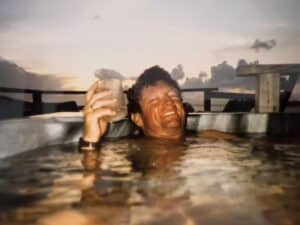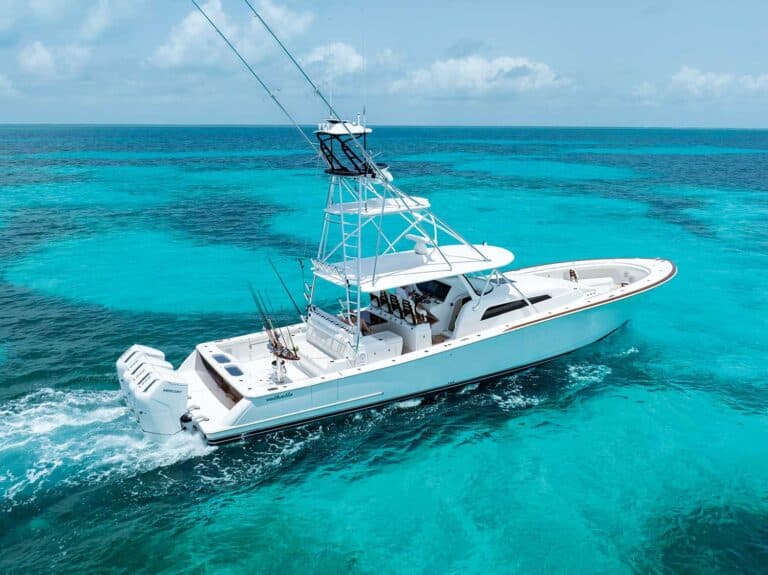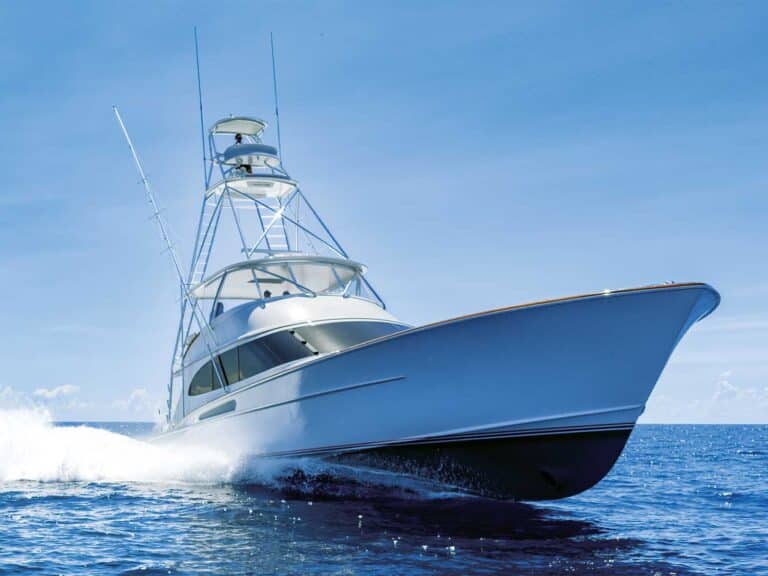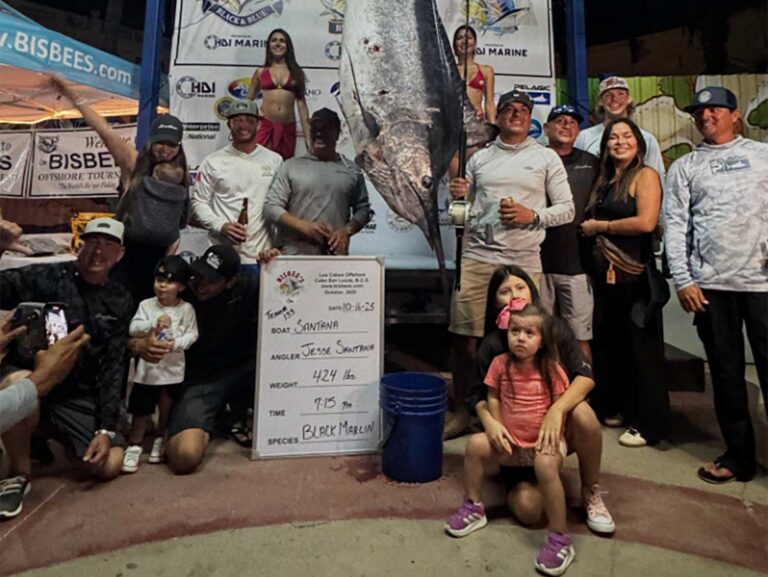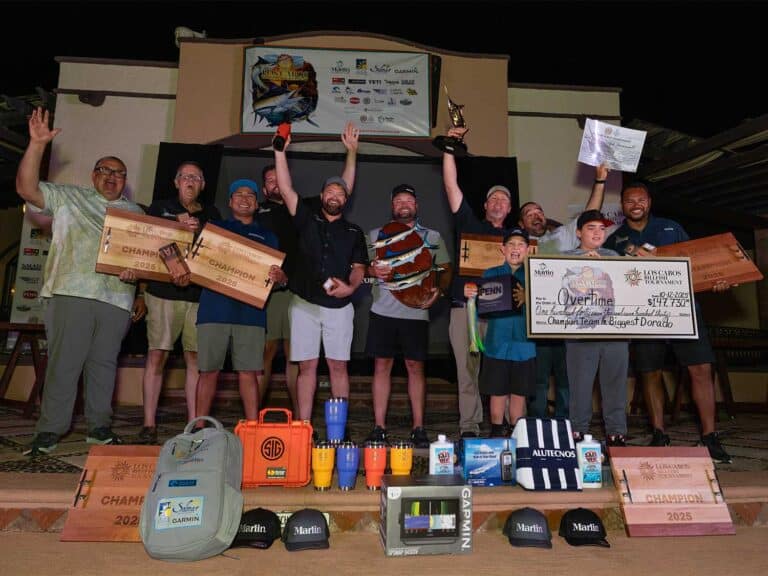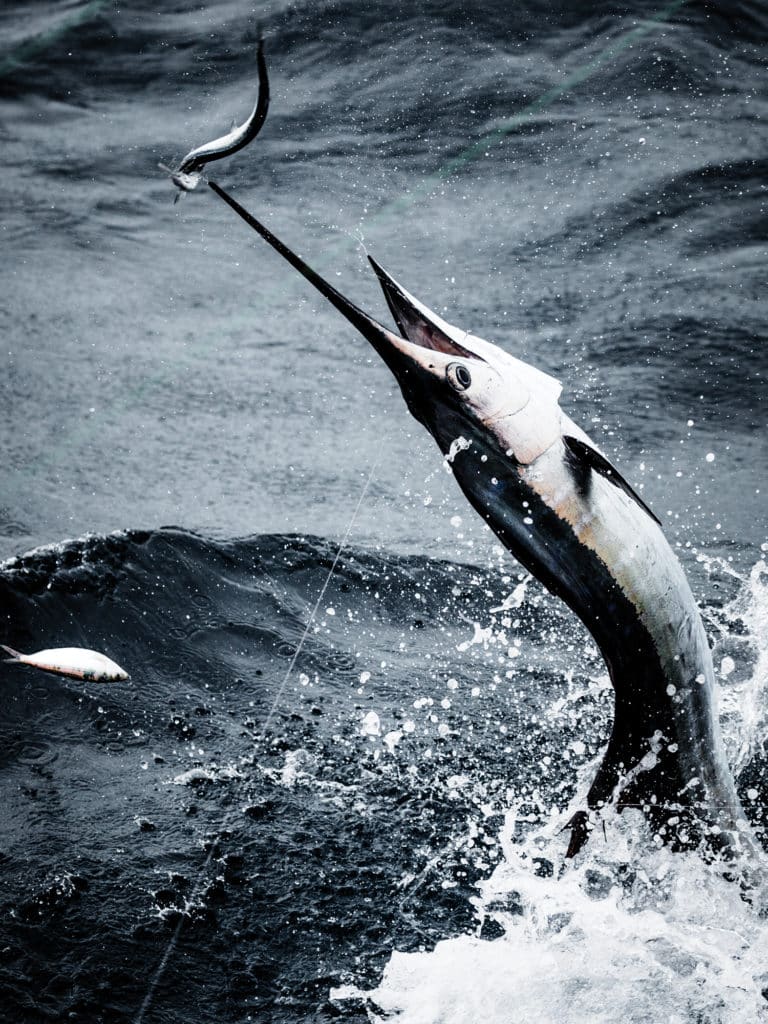
I noticed my live threadfin herring was getting nervous as I was letting it back into the spread, and the quick run that followed signaled my bait had been picked up. After a quick drop-back, I came tight to a sailfish that immediately jumped acrobatically into the air. In no time, we had the fish alongside the boat for a couple of pictures and a quick release. I was just 16 years old at the time and, like most anglers, the fish was my introduction to the billfishing world. Sailfish are Florida’s most prolific billfish species and, depending on where you are around the state, there are many different ways captains and anglers target them — they really should call sailfish, not largemouth bass, the state fish.
The ocean contours change drastically as you move down the Atlantic coast of Florida, and even more so when you move to the Gulf coast. As a result, sailfish tend to pass through these areas differently, and these patterns directly impact how anglers chase sailfish around the state. Techniques range from live-baiting — often using kites — to the use of dead-bait trolling tactics with dredge and surface teasers. Other times, the best method is sight-fishing for sailfish and properly presenting a bait right in front of the fish. But don’t just focus on proficiency in a single technique: There are times when you’ll need to switch back and forth, depending on the conditions and region in which you are fishing.
Treasure Coast Sails
Capt. VJ Bell runs Unbelievable and primarily fishes off Stuart and Fort Pierce. The continental shelf extends farther offshore along these hot spots, so like many other skippers in the area, Bell opts to troll dead baits for sails about 90 percent of the time in order to cover more ground. This region’s sailfish season begins in mid-November and can extend into late February or early March. The prime time is right after a cold front when the winds are blowing from the north — both northwest or northeast winds are favorable — and conditions offshore are bearable.
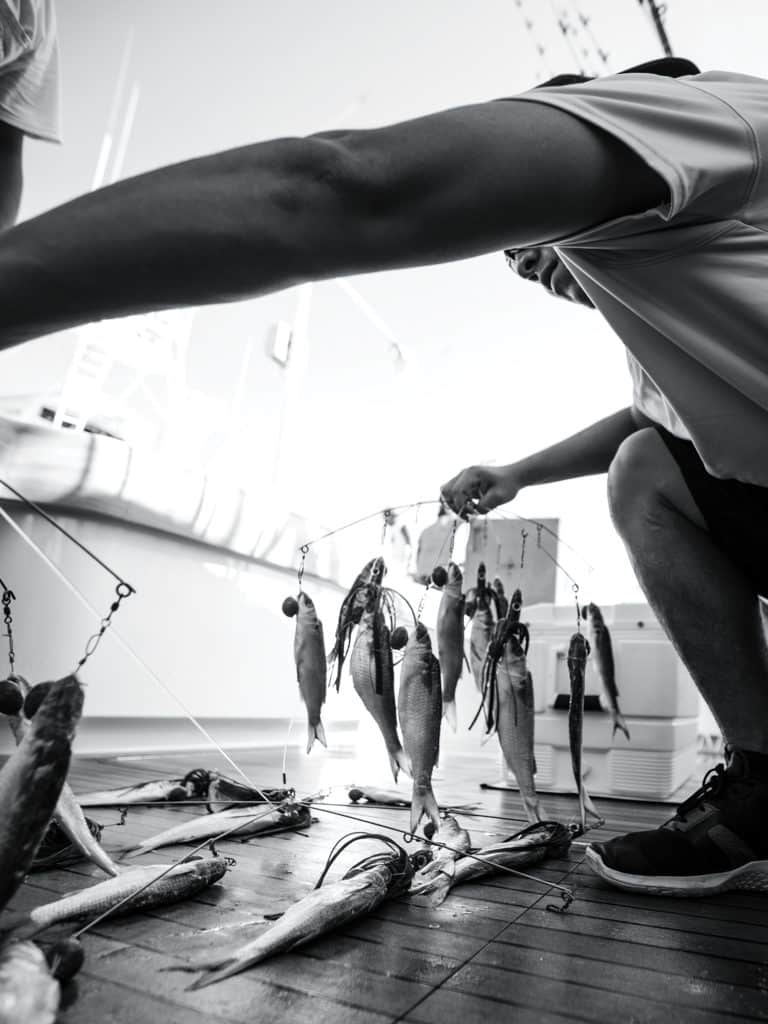
Bell spends a lot of time networking via phone calls and radio conversations to gain an idea of where the fish were the day before so he knows where to begin to troll. He predominately targets different bottom structures that could be holding bait — and with it, sailfish. When analyzing things above the water, Bell looks for characteristics that tend to hold bait, like a color change or temperature break. If he marks bait on the finder, he will make a circle around it two or three times before moving on. He may stick around a little longer if he marks a sailfish or sees bird activity on the surface, or if he sees microsize flying fish. When Bell finds a current change, he likes to work both sides to see which side holds the most bait, and he is not afraid to fish in the green water.
When analyzing things above the water, Capt. VJ Bell looks for characteristics that tend to hold bait, like a color change or temperature break.
Bell’s tackle option is a small ballyhoo rigged with a 7/0 circle hook on 40-pound fluorocarbon. He will fish two long-rigger baits and two flat-line baits. For teasers, Bell uses two natural dredges and two squid chains, and he uses purple, green or pink squids with a blue-and-white or a purple-and-black Ilander combo with a ballyhoo as the chase bait. Bell sometimes likes to add color to the dredge and matches it with the chase bait.
Head South, Fly a Kite
The fishing grounds between Palm Beach Inlet and Jupiter Inlet are a transition zone where you may find captains fishing side by side, either trolling dead baits or fishing with live bait. The continental shelf just north of Jupiter Inlet swings out farther offshore, which lends itself to captains trolling dead bait. But the shelf drops rapidly south of Jupiter Inlet, and fishing live bait in the concentrated area is more effective. Capt. Randy Yates on Miss Annie believes the close proximity of the Gulf Stream is one of the greatest benefits for fishing off Palm Beach. Prolonged easterly winds tend to push the bait farther inshore, and Yates has caught sailfish a half-mile inside the head buoy of the inlet. The best time to target sails in this area is between the beginning of November all the way into late February or early March.
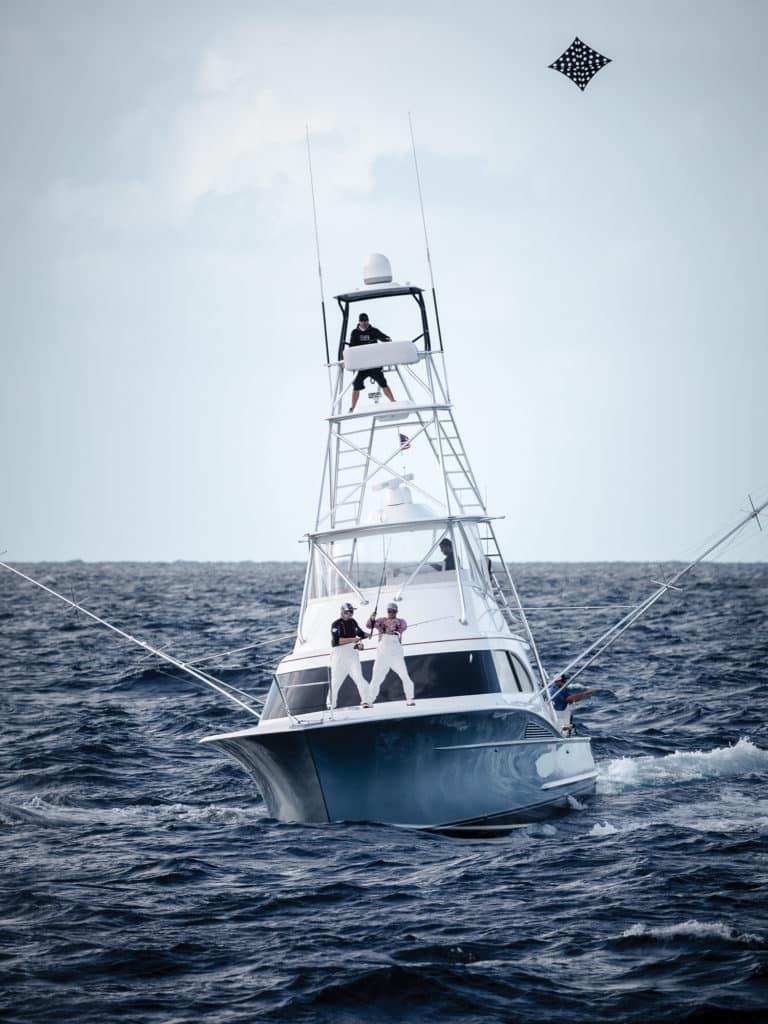
The area from the Breakers Hotel just south of Palm Beach Inlet to the condominiums that are just north of the inlet is one of the most overlooked fishing areas. This stretch of ocean has six artificial wrecks in addition to the ability to fish the productive outgoing tide, which he tries to time so that he maximizes his fishing time near it. If there aren’t sails pouring through during that window, there are resident fish that hold on the artificial structure. But the Juno Ledge, a unique bottom structure south of Jupiter Inlet, is his prime spot, and the north current creates an upwelling that concentrates bait when it hits the ledge.
Yates tries to cover as much ground as possible during his hunt for sailfish, and analyzes both wind and current to predict the zone where they might be. He hopes for both a strong north current and a north wind, especially when they have lasted for over three days. In these conditions, sailfish tend to push up to the surface and tail down-sea. If there is lighter wind, the sailfish cannot take advantage of the north wind to help them swim against the current, so they will often move inshore where it is easier to travel. When this occurs, Yates will push inshore to fish in the lighter current, even if it means more bites from kingfish.
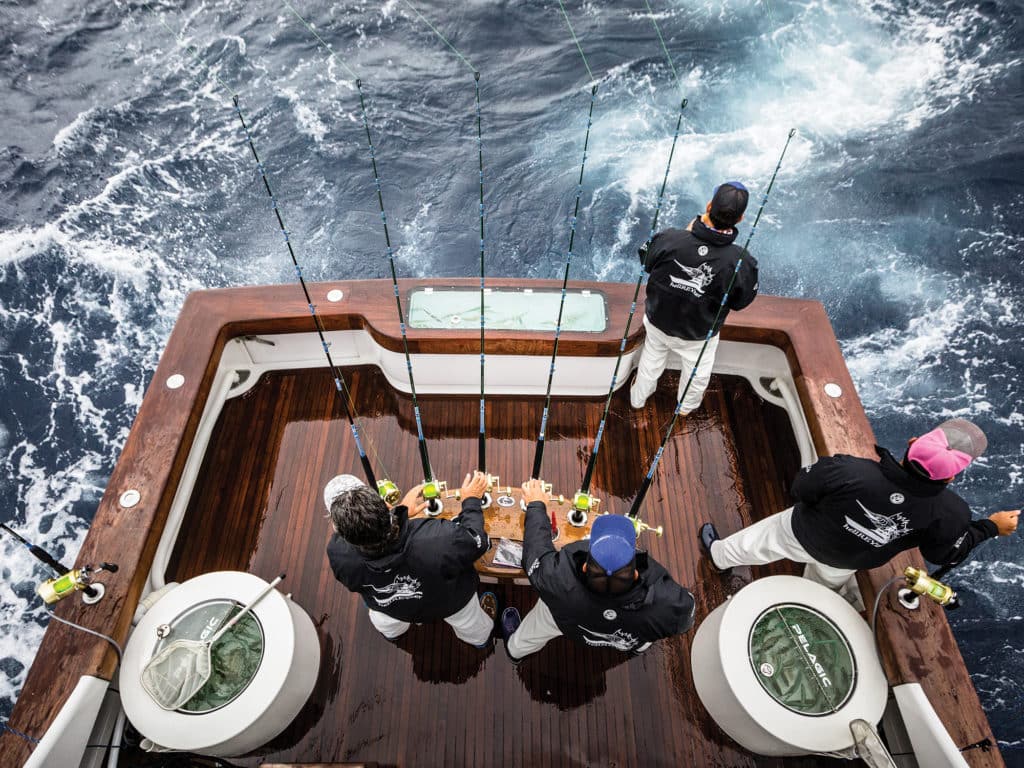
Even south and southeast winds before a cold front provide a good chance of catching sailfish, as long as there is a north current — those fish will usually continue to bite until the wind switches to the southwest ahead of the front. Yates once caught 18 sailfish on a day when it was 89 degrees with a 15- to 20-knot wind from the south. He also believes the first day after a strong cold front is often a letdown because the conditions have just freshly turned to the north.
Yates’ normal spread consists of two kites, with three baits on the up-current side and two baits on the down-current side. He also fishes one flat line and always has a pitch bait ready. His preferred bait is a goggle-eye bridled through the nose with a 7/0 circle hook on 40-pound fluorocarbon leader, although he will go up to 50-pound mono or even use wire leader. Last season, he caught over 80 sailfish using wire leader. And while goggle-eyes are his primary bait of choice, he does switch over to threadfins and sardines later in the season.
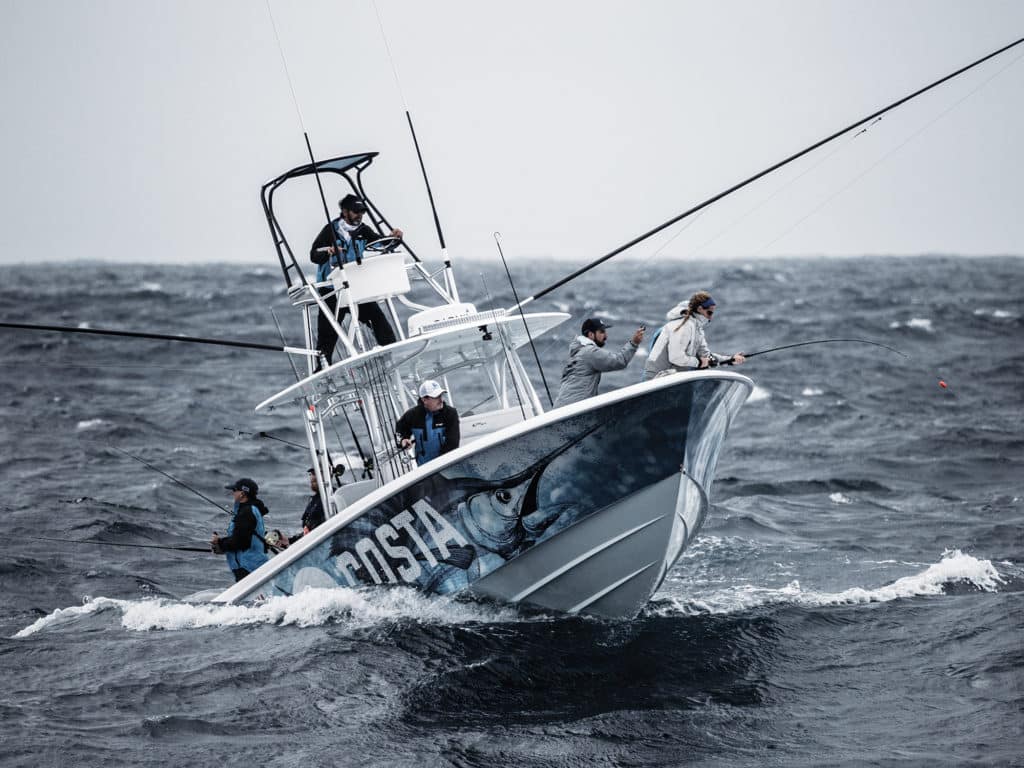
Yates believes there are generally more sailfish with the first one you hook. Once the initial fish is hooked, he tries to keep the boat in a position — if possible — that allows him to angle the kite baits closer to the hooked fish for a shot at another. In the case that Yates needs to chase a fish, he is comfortable dragging his baits through the water because the goggle-eyes are hooked through the nose.
The Miami Connection
Capt. Ray Rosher runs the charter boat Miss Britt and has always been one of the most successful tournament captains in South Florida. He primarily fishes the waters from Government Cut down to Key Largo and emphasizes that you can catch sailfish off Miami all year, but December through early June is the prime time. One of the greatest attributes here is the fact that Biscayne Bay dumps green water onto the edge of the reef. This nutrient-rich water hits the north current of the Gulf Stream and creates a natural boundary that holds baitfish and attracts sailfish. Sometimes when the north current is weak and you cannot find clean water, Elliott Key and upper Key Largo act as a seawall that holds back the green water from Biscayne Bay where the cleaner water will be just to the south. This especially happens on a spring tide, which pushes more water out of Biscayne Bay. When there is a strong north current, the green water will shear off and produce a strong edge — Rosher’s favorite condition. However, he does believe that depth sometimes trumps water color.

While fishing the Miami Raft Tournament several years back (where each participant fishes on a customized truck inner tube), Rosher knew the fish had been showing up in 130 feet of water just inside the blue-green color change. He waited until after the lines-in call to have his raft set up in the green water. Before anybody knew what happened, Rosher had already released two sails and ended up winning with a total of three. Rosher likes to quote the legendary Nick Smith: “A great place to start fishing is where you see a sailfish.”
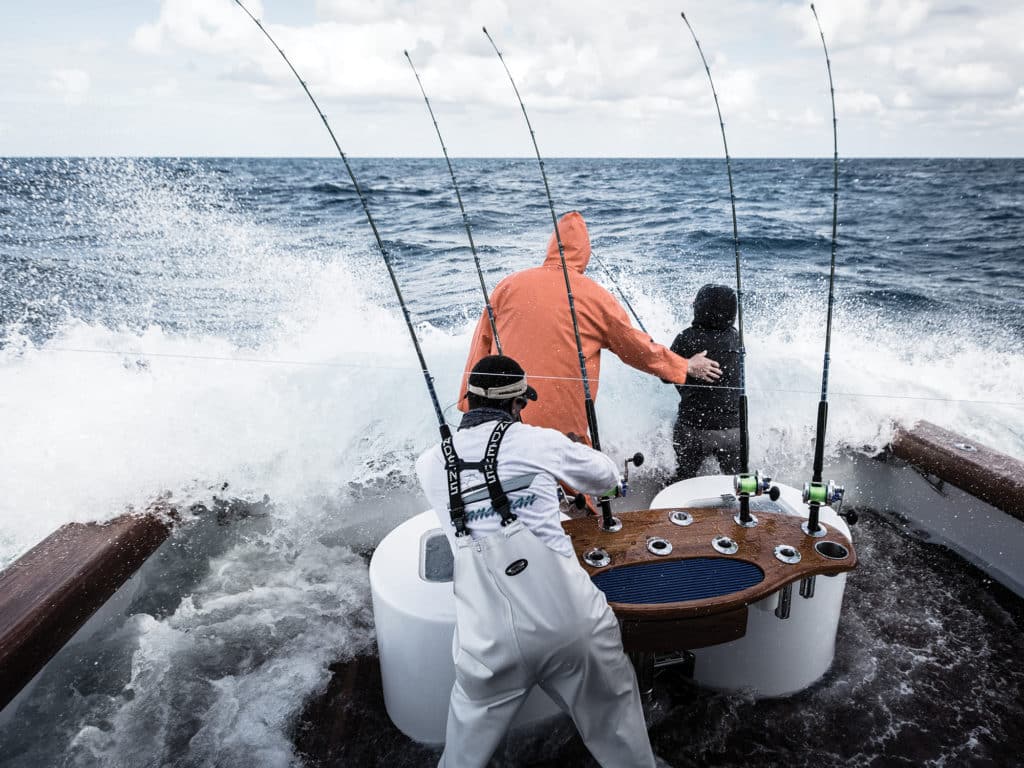
Rosher tries to create the biggest footprint on the water with his spread so he can cover as much area as possible. He normally fishes two kites with three baits on each kite, in addition to one flat line or middle bait and one deep bait. Sailfish are opportunistic feeders, and Rosher has caught them on pinfish, yellowtail snapper, blue runners and, of course, your regular assortment of baits such as goggle-eyes, threadfin herring and pilchards. On one occasion, he even watched a sailfish spit up a parrotfish when the sail was on the leader. Active live bait is key, and it’s important to handle your baits minimally and store them in a livewell that is not overcrowded. The bait should also match the size of the sailfish that are biting: Sails tend to be a lot smaller during October through December, so smaller baits are essential.
Keyed In
Everything gets shaken up and turned around when fishing off the southernmost point of the United States in Key West. Capt. Mike Weinhofer runs Compass Rose and employs some unique fishing techniques throughout the sailfish season. Beginning in November and proceeding into December and January, you will find sailfish showering ballyhoo on the shallow reefs.
Sailfish will chase and eat ballyhoo as they go up on top of the reef, but they will never do it as the ballyhoo come off the reef into deeper water.
A northeast to east wind creates prime conditions, as it helps push ballyhoo onto the reef. Sailfish will chase and eat ballyhoo as they go up on top of the reef, but they will never do it as the ballyhoo come off the reef into deeper water. Weinhofer can tell what species is showering ballyhoo by the size and frequency of the shower: It’s more than likely barracuda or cero mackerel if it’s just a single shower of bait, but it’s sailfish when the ballyhoo shower three or four times.
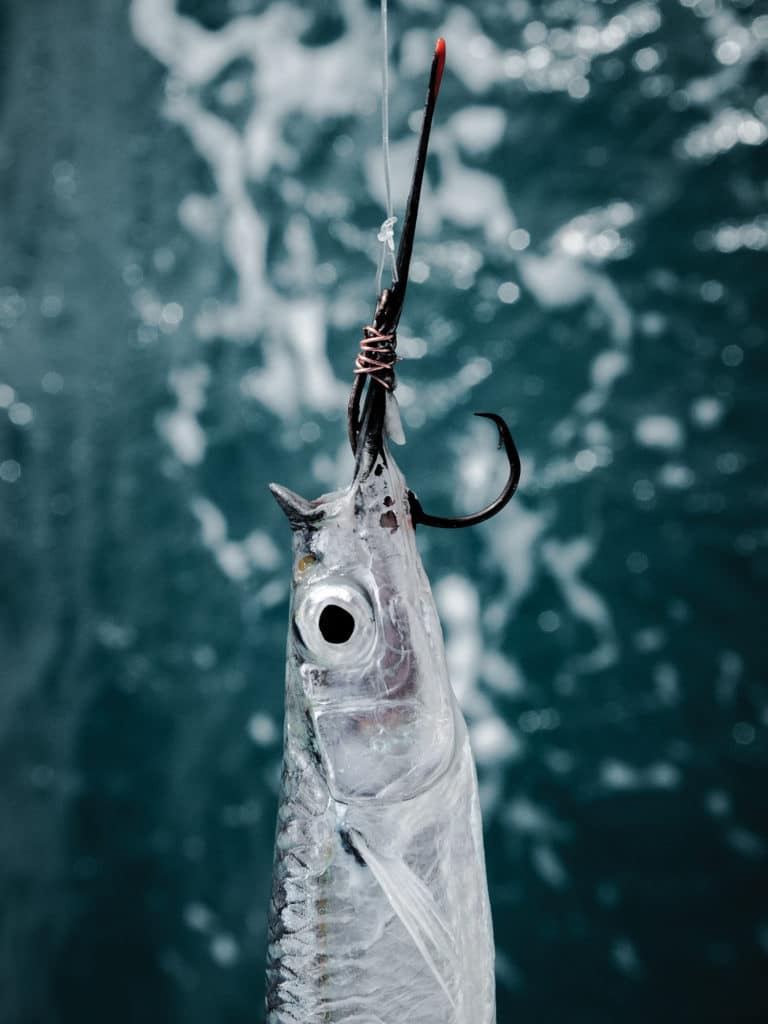
His preferred tackle for chasing sailfish showering ballyhoo is a spinning rod with a live ballyhoo rigged with a circle hook and a short piece of copper wire. He hooks the bait through the bottom of the bill with a 6/0 circle hook and then wraps the copper wire around the bill. He will have his anglers sidearm cast the bait toward the lowest frigate bird working near the surface — the sailfish closest to the surface typically has the frigate right above it. The sidearm cast prevents the bait from being slapped hard against the surface, which can stun the bait.
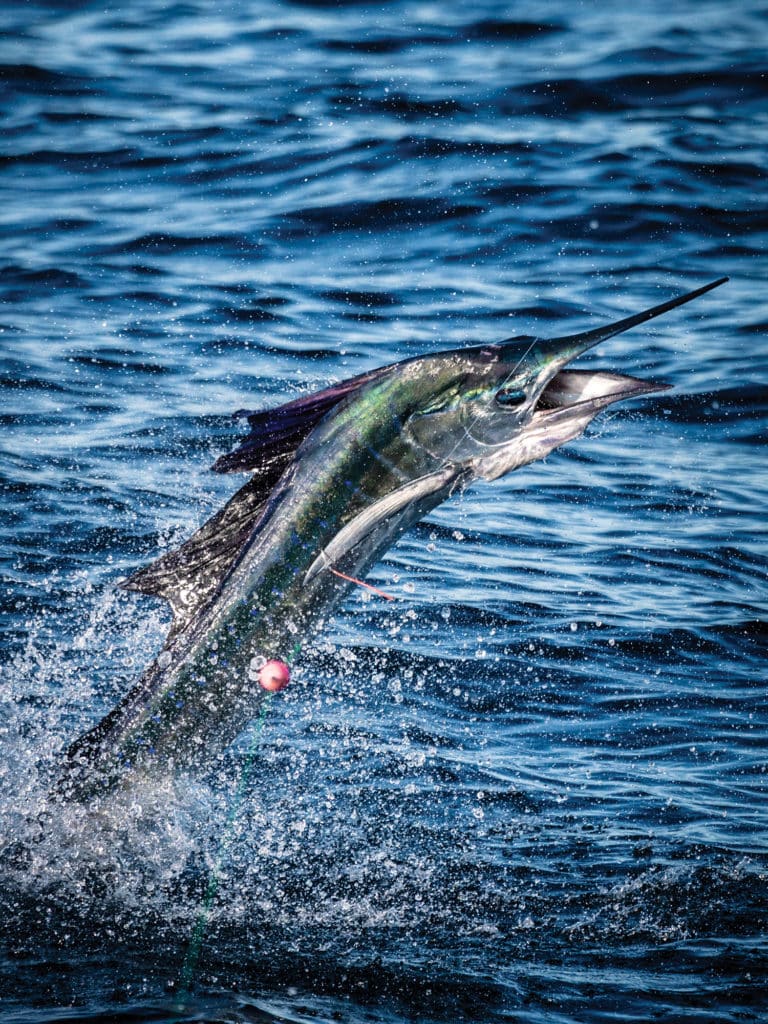
But from January through March, big schools of jacks move in and pick the ballyhoo schools apart. This causes the sailfish to move offshore, where normal kite-fishing techniques take precedence. Weinhofer continues to kite-fish until the wind and the current collide, which produces the perfect tailing conditions for sailfish. It’s important not to approach the tailing fish from straight behind or from right in front of the fish because it will cause them to go deep. Instead, approach from the side and present a live threadfin herring or sardine in front of them.
As the water temperature warms up, the sailfish move farther offshore and can be found out to 600 feet. Watch for free-flopping sails, then work the area. Weinhofer believes they go offshore to spawn: This is evident during the summer when mahimahi stomachs are filled with palm-size baby sailfish.
Northern Latitudes
Florida’s Panhandle area is often overlooked for sailfish, and it’s not uncommon for anglers fishing from piers or kayaks to catch a sail here. Capt. Myles Colley and his crew on Born2Run target sailfish — and often white marlin — with great success offshore during the late summer months on into October. Colley targets sailfish around the 100-fathom curve and concentrates on bottom structures that hold bait. He prefers clean, blue water — or sometimes blue-green water — and focuses on finding baitballs of tinker mackerel, sardines, menhaden or butterfish.
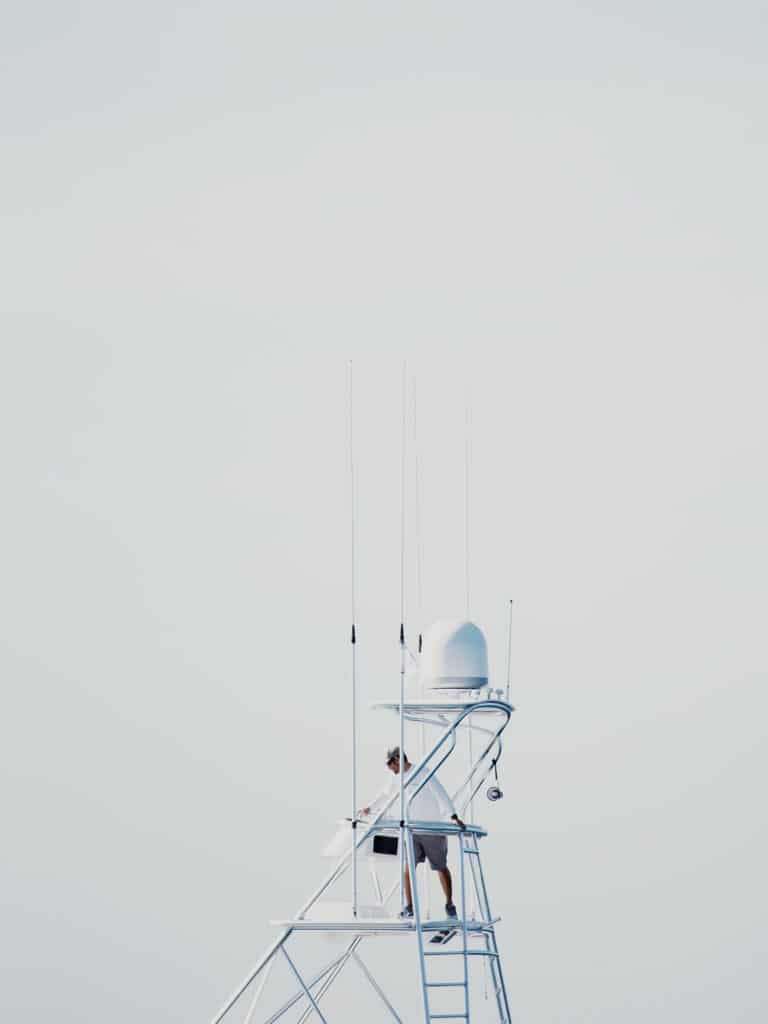
Colley likes to troll a medium ballyhoo rigged with a circle hook tied to 80-pound fluorocarbon leader. His typical sailfish spread consists of two naked ballyhoo on long riggers, two ballyhoo with chugger heads on the flat lines, and pink and green squid chains matched with an Ilander Express ballyhoo combination fished above two dredges.
It doesn’t matter if you head to Florida’s east coast or Gulf coast, north or south, Florida has year-round opportunities to target the state’s most prolific billfish. Pick a destination and sharpen either your dead-bait or live-baiting skills — or both — and get in on the action. When the sailfish show up around the Sunshine State (besides those resident fish), it’s something special that you really don’t want to miss.

